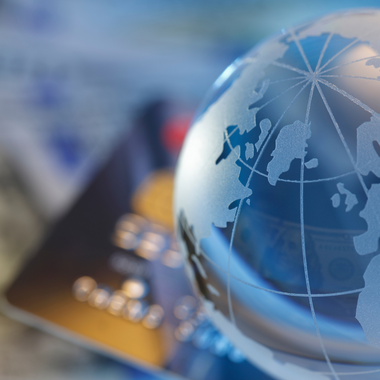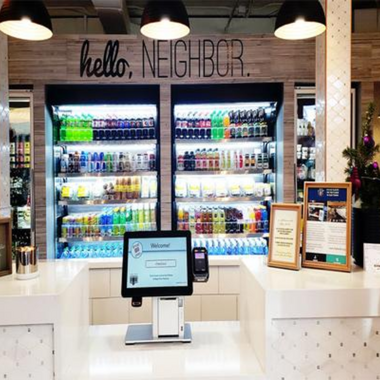
- 4 minutes read
Checkout check-up: Meeting Americans’ diverse payments preferences
U.S. consumers’ in-store and online payment preferences have never been as diverse as they are today. In an article originally published in American retail media outlet Total Retail, our President of Merchant Solutions Afshin Yazdian discusses how U.S. retailers can tailor their in-store and online checkouts to meet customer expectations.
“Society is unity in diversity,” wrote philosopher George Herbert Mead. Retailers are today faced with the checkout challenge of unifying consumers’ payment preferences, which have never been more diverse. Payment technology plays an essential role in ensuring customers’ transactional expectations are met and even exceeded, so they return again – and again.
“Can I pay with this?” Whether a customer is asking the question to a cashier or scanning the payment options at an online checkout, a retailer needs to be able to answer in the affirmative, or at least provide the customer’s second payment preference.
COVID-19 has upended the retail experience and galvanized a major diversification in consumers’ payment preferences. Four out of 10 Americans have permanently changed the way they pay since 2020, according to our Q2 survey.
Contactless cards & mobile wallet growth
To a degree, payment preferences depend on the purchase. Consumers are more likely to favor cash for smaller items than they would for more expensive products, with 46% of shoppers we surveyed preferring cash to buy bakery pastries versus 20% for clothes.
These nuances aside, one trend is clear across all retailers: consumers favor credit and debit cards. Even at a bakery, 49% of customers prefer cards, rising to 69% in a clothes store. Supporting in-store card payments requires a robust point of sale (POS) terminal. Technology is constantly evolving, but most retailers understand the importance of having the most up-to-date POS, with 73% of merchants we surveyed in 2021 prioritizing this.
An essential consideration is supporting contactless card payments, which has enjoyed massive growth over the last few years. Our 2018 research revealed that just 3% of Americans were paying with tap-and-pay monthly compared to 67% today (Q2). Merchants not providing this option at their checkout in 2022 will create friction in the retail experience.
Consumers’ increasing familiarity with contactless card payments is no doubt also stimulating mobile wallet usage in store. Our research revealed that 37% of shoppers are now paying at least monthly via a wallet like Apple Pay using their smart phone or wearable device. With eMarketer reporting that 88% of Americans aged 12+ own smart phones, mobile wallet usage will almost certainly continue to grow.
And the concept of mobile payments extends to POS terminals. Fixed terminal card readers dominate the retail space, with 59% of merchants we surveyed in Q4 offering these. However, wireless card readers that can be brought to the customer are growing in popularity, with 45% of retailers using mobile POS that are quicker and more convenient, especially in restaurants or for field services like plumbers.
Retail to E-tail
The pandemic’s lockdowns saw retailers increasingly extending their businesses into the digital space with websites equipped with card-not-present (CNP) checkouts. Today 71% of U.S. retailers have an online checkout, with a fifth of these diversifying into E-tail during COVID-19, according to our Q4 research.
This growth is likely to continue. Of the E-tail holdouts we surveyed, 43% expect to have an online checkout live by end-2022, though 50% have no such plans. This would be a mistake. While shelter-in-place orders are now in the past, consumers have never been more engaged with the convenience and speed of eCommerce.
Integrating a CNP checkout into a website does involve investment, though the ROI will almost certainly be impressive. An online checkout extends a retailer’s opening hours to 24/7 and its geographical reach from a neighborhood to across the country.
Optimizing online customer conversions is just important as in store. With the range of available online alternative payment methods (APMs), consumers’ payment preferences are arguably even more diverse. That said, cards are still king. With inflation higher, shoppers are tending to prioritize debit cards, with 60% using one at least monthly in Q2 versus 54% paying with credit cards.
Connectivity to a payment gateway for card processing is therefore essential for retailers. But consumers’ growing adoption of APMs means that these also need to be part of a CNP checkout. After cards, online shoppers’ favorite payment method is digital wallets, with 29% using a wallet at least monthly. Any retailer without the option of a digital wallet is going to lose customers or create friction with a consumer forced to reach for his credit card.
Likewise, if a customer is used to paying with Apple Pay on their phone in a retailer’s physical store, this mobile wallet should also be an option at their online checkout. In Q2, 24% of consumers used a mobile wallet to pay online. And this proportion will grow as more retailers bolster their checkouts with this payment method.
Looking ahead, with 11% of consumers paying online with either cryptocurrency or eCash today, the payments space for retail is set to become even more diverse. Just as retailers aim to satisfy customers with products that meet their specific needs, they need to adopt the same approach to online and in-store payments. After all, merchants’ main objective for every retail action is ultimately a transaction.
This article was originally published in Total Retail, and you can read the original article here.




